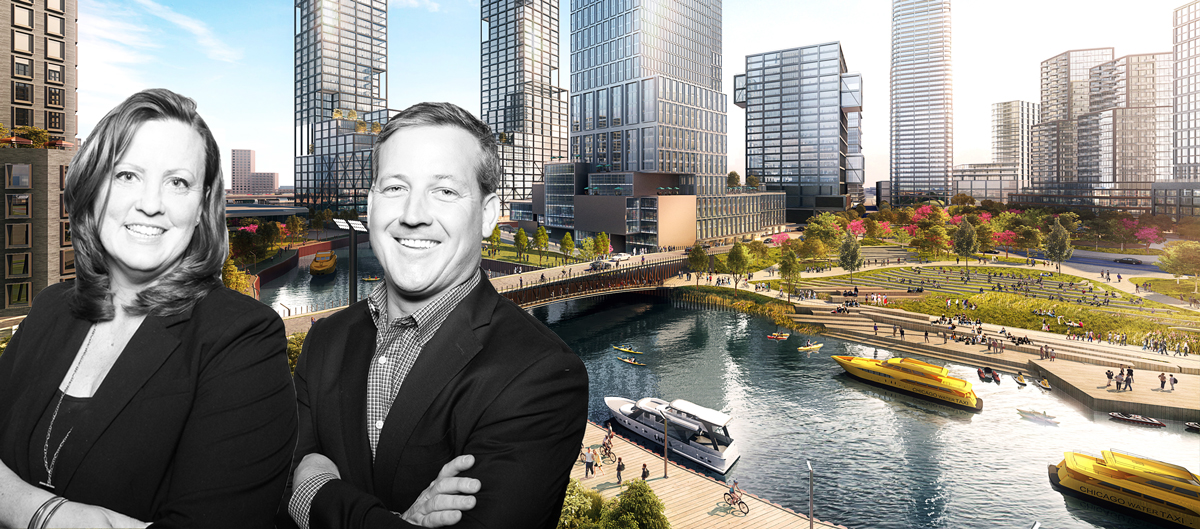Sterling Bay’s $5 billion Lincoln Yards development would include up to 5,000 residential units, 6 million square feet of commercial space, hundreds of hotel rooms and a host of infrastructure improvements along the North Branch of the Chicago River.
The firm’s principals unveiled a preliminary plan for the 53-acre development Wednesday night, timing the presentation with their submission of two separate planned development applications, one for each side of the river the company plans build on.
The meeting was hosted by Alderman Brian Hopkins (2nd), who told the hundreds of attendees they were at the “starting line” of a community feedback process that could take months or more.
Sterling Bay development director Erin Lavin Cabonargi sprinkled some new proposals for the site, like water taxi stations and three new bridges over the river, among a host of ideas the company had already shared, like a new Metra station and sledding hill.
The developer would pay just over $60 million into the city’s density bonus fund in exchange for floor-area ratios of 6.5 on its north site and 4.5 on its south site, Cabonargi said. She added that buildings would “average” around 300 feet tall but certain “icon” buildings could reach as high as 800 feet, a number that sent grumbles echoing through the audience.
After the meeting, Hopkins signaled that Sterling Bay would likely have to pull back its height ambitions if it wants to appease influential neighborhood groups.
“In any review process, you never see the community ask for more density,” said Hopkins, whose ward covers most of the site. “This is like any negotiation — the two sides begin somewhat far apart, and they’ll have to find common ground.”
The developer envisions 12 million square feet equally divided between residential and commercial spaces, including 400 to 500 hotel rooms.
It would feature an “arts and entertainment” district at the south end of the site anchored by a 20,000-seat soccer stadium. The company announced a deal in May with Cubs owner Tom Ricketts to bring a United Soccer League team to the venue.
Cabonargi also described an overhaul of the roadways that criss-cross the site. The plan would extend Dominick and Kingsbury avenues so they run continuously from Webster Avenue to North Avenue, and it would vacate some smaller streets, like Dickens and Southport avenues.
New traffic bridges would extend Dominick and Concord Place over the river, and a planned 1,300-foot extension of The 606 trail would carry cyclists and pedestrians over the waterway. About a quarter of the 53-acre property would be dedicated to open recreational space, including a mile of riverwalk promenades.
The company has not shared how it would fund the neighborhood-sized development, which it said could accommodate 23,000 on-site jobs. The site is among those the city has proposed as a potential home to Amazon’s coveted second North American headquarters.
Sterling Bay bought the 22-acre site of A. Finkl Steel & Sons on the east bank of the river in late 2016, and months later paid the city $105 million for the 13-acre former home of its fleet and facilities management department on the west bank. Earlier this week General Iron Industries announced it would sell its 21.5-acre property, which sits immediately south and east of Sterling Bay’s holdings.
The developer has been accelerating its activity Downtown and in the West Loop so far this year, most recently by buying up about 900,000 square feet of office space in the former John Hancock Center in a more than $300 million deal.
